Der vollständige Vereinigte Staaten Führungs- und Mietführer
Speed Limit and Traffic Signs
Driving is on the right with the steering wheel on the left-hand side of the car. Since traffic rules differ from state to state, it is better to review the regulations for each individual state in which you are planning to drive. Pedestrians have the legal right of way in all states.
 Speed Limit
Speed LimitThe speed limit varies from state to state, butis of 65 miles per hour (equals110 km p/h) in the majority of the states. Speed limit is frequently monitored by radar guns.
 Traffic Signs
Traffic SignsMany US states comply with the same road signs standard, but some of the states and large cities such as New York City have adopted an extent of localization or a supplement.
Although there is a variety of regulatory signs throughout different states, they are usually self-explanatory, with explicit wordings marked on the signs.
 Stop
Stop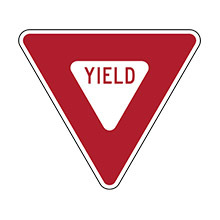 Yield(Give Way)
Yield(Give Way)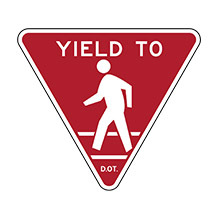 Yield to Pedestrians, New York City
Yield to Pedestrians, New York City Passing Zone Ends
Passing Zone Ends Passing Zone Begins
Passing Zone Begins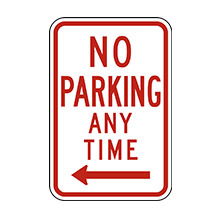 No Parking
No Parking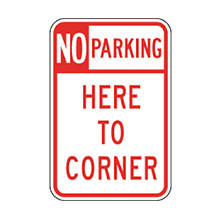 No Parking; Here to corner
No Parking; Here to corner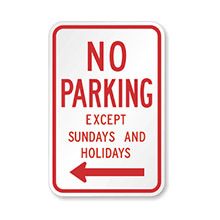 No Parking; Except Sundays
No Parking; Except SundaysAmong regulatory signs, there is one category which indicates ‘No Standing’, and may be unfamiliar for foreign visitors or international travellers. ‘No standing’ signs indicate that stopping temporarily to load or unload passengers is allowed, while parking is not allowed. The signs are also usually red on white, but local variations exist.
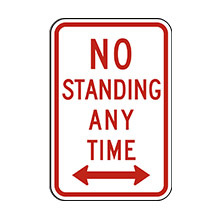 No Standing Any Time
No Standing Any Time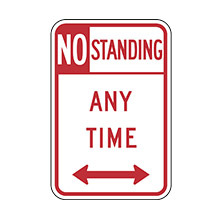 No Standing Any Time New York State
No Standing Any Time New York State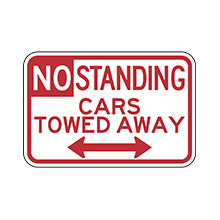 No Standing Cars Towed Away, Baltimore
No Standing Cars Towed Away, BaltimoreWarning signs feature yellow background colour and black pictogram, with a few exceptions.
 Road Slippery When Wet
Road Slippery When Wet Curve With Speed Advisory
Curve With Speed Advisory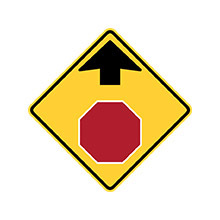 Stop Ahead
Stop Ahead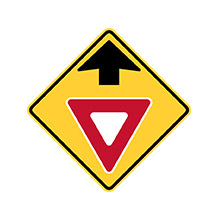 Yield Ahead
Yield Ahead Railroad Crossing(Crossbuck)
Railroad Crossing(Crossbuck)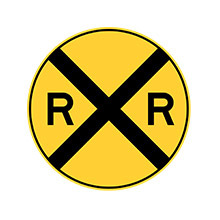 Railroad Crossing Ahead
Railroad Crossing AheadInformation signs provide guidance and feature rectangular shape.
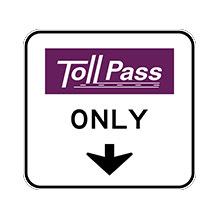 Toll Road Pass Only
Toll Road Pass Only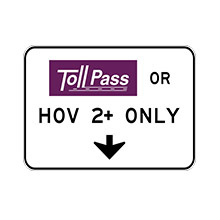 Toll Road Pass or HOV 2+
Toll Road Pass or HOV 2+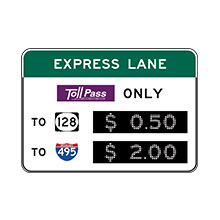 Toll Costs at Intersections or HOV 2+
Toll Costs at Intersections or HOV 2+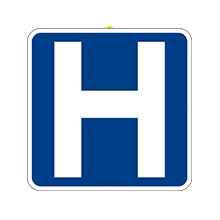 Hospital Sign
Hospital SignYou may refer to this for the unified standard that is used by the states.
Seatbelt and Child Safety
 Seatbelt Laws
Seatbelt LawsAll drivers and passengers are regulated by law to wear seatbelts. A fine applies if a driver or passenger is caught without a seatbelt on.
 Booster Seat Laws
Booster Seat LawsEven though regulations vary by state, almost all states require children to be in a child seat facing backwards in the front of a car, or facing forward in the rear. As a minimum guide, children should use a booster seat until they reach 36kg to 45kg or 145cm high.
For a specific guidance regarding child safety rules, you may click here.
Parking, Fuel and Toll
 Parking
ParkingYou must always park in the direction of the traffic flow on the near side of the road. Often, parking spaces are diagonally aligned and ‘head-in’, which means the front of your car must be facing the pavement (sidewalk).
· Parking Restriction
In some cities, parking restrictions are indicated by the kerb colour; for example, a red kerb indicates no parking at any time, a yellow kerb may signify a limited truck loading zone, a green kerb indicates a limited parking period, a blue kerb for disabled parking only, and a white kerb passenger loading and unloading. No parking areas, for example, at street corners, may be indicated by yellow lines. Therefore, you should always read all pavement markings carefully.
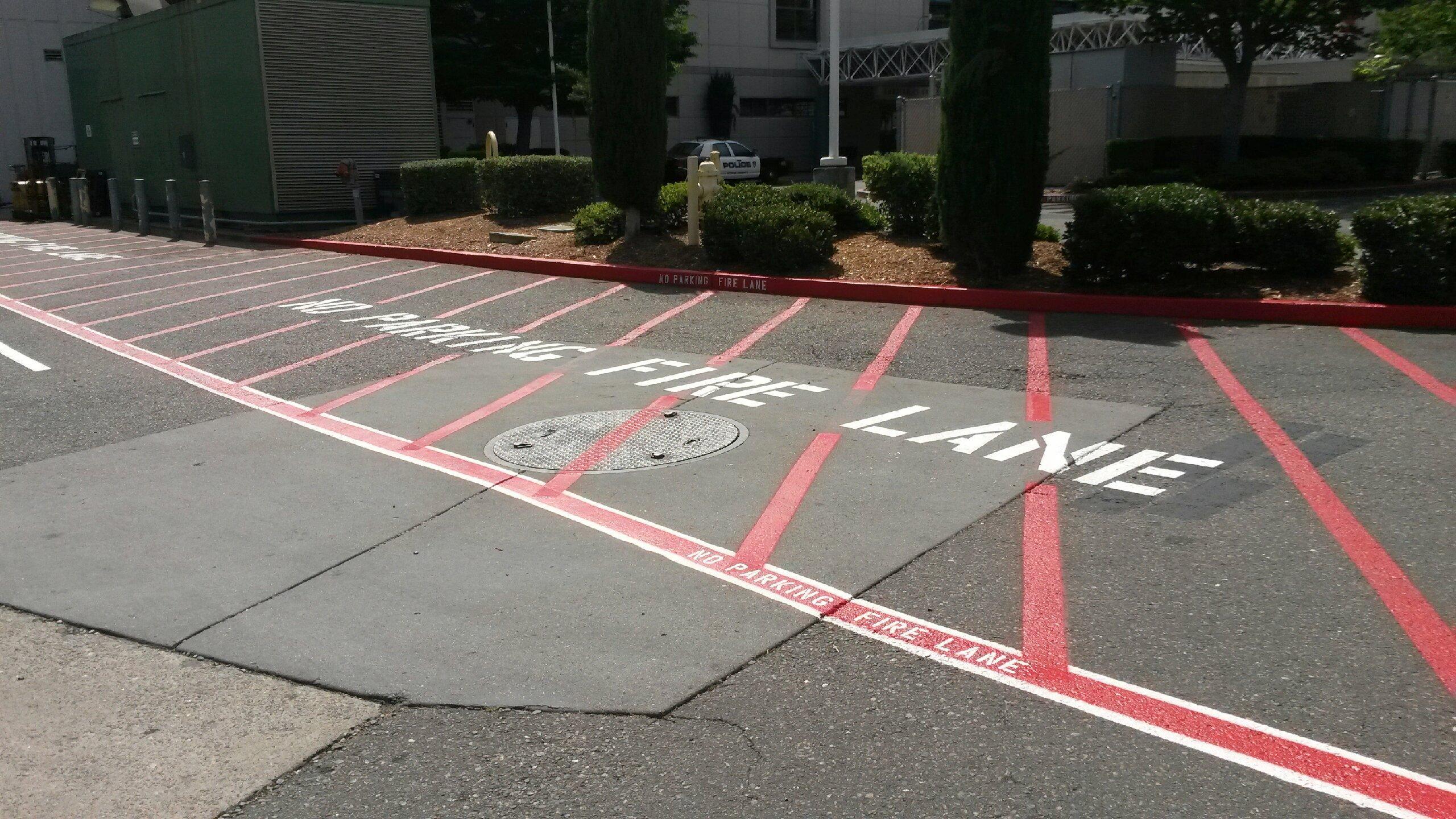 (Image from aarestriping.com)
(Image from aarestriping.com)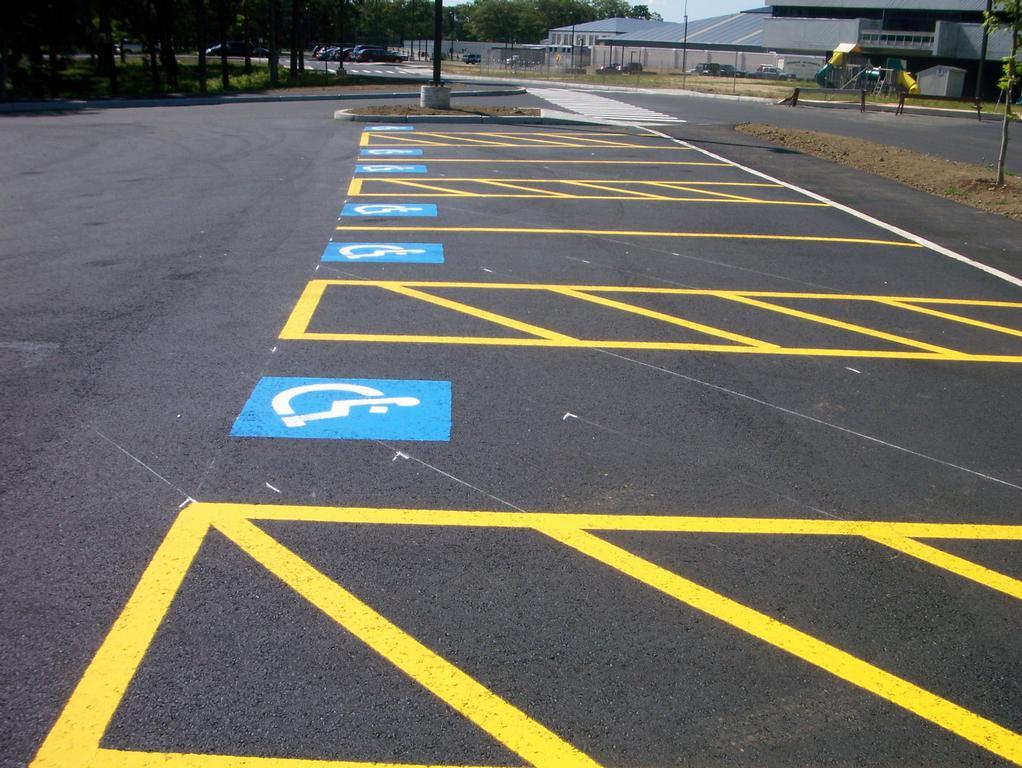 (Image from merchantcircle.com)
(Image from merchantcircle.com)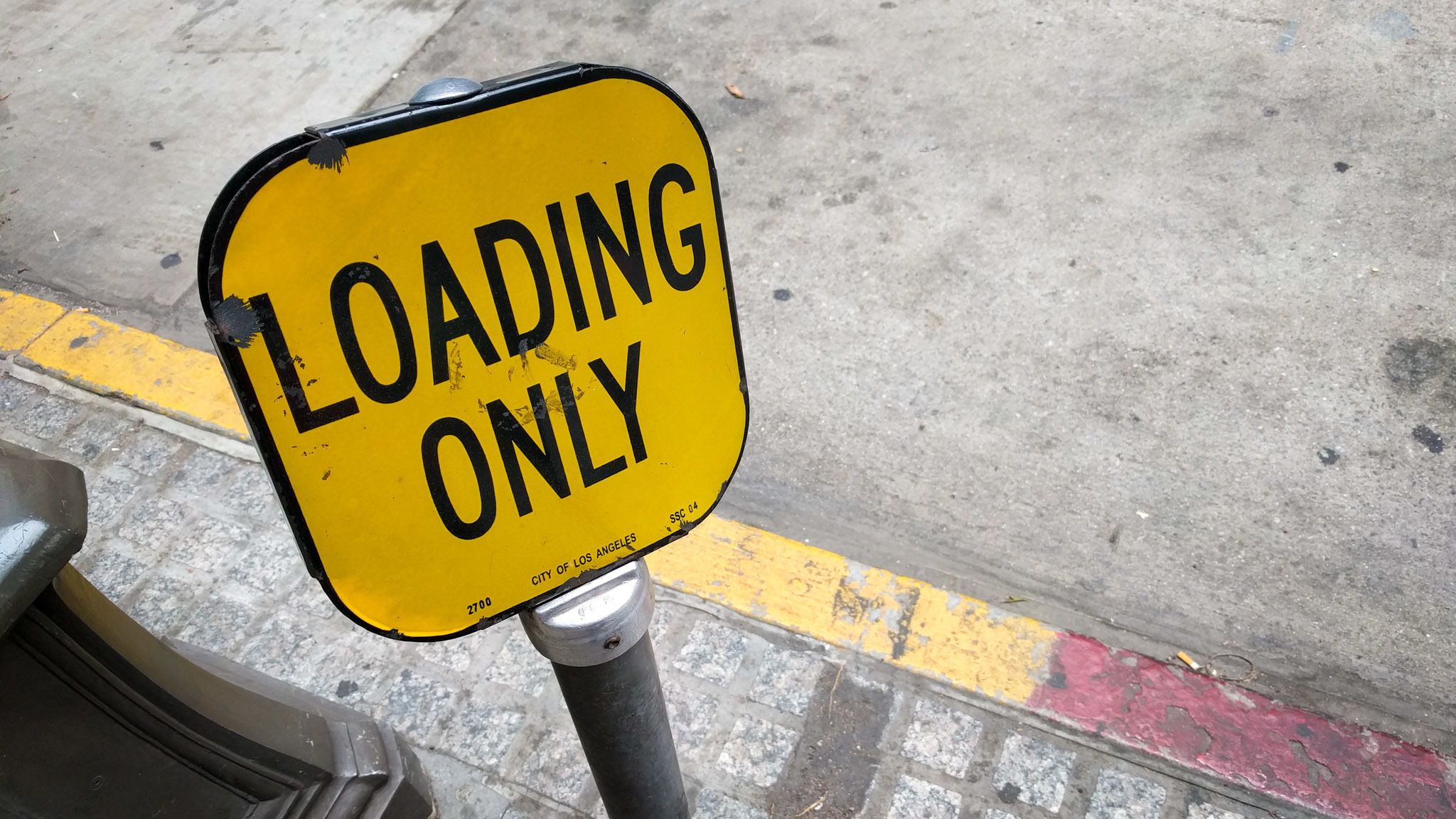 (Image from timeout.com)
(Image from timeout.com)· Paid Parking
Parking in most cities and towns isn’t usually a problem and on-street parking is usually metered, along with permissive parking signs specified with a restricted amount of time. It’s advisable for you to estimate your parking time and reserve a bit more parking fee as a precaution to avoid the fine for overtime parking.
The signs are green and white, and local variations do occur with additional information or slightly different designs.
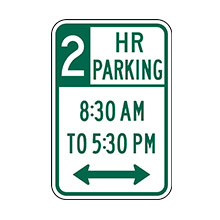 Parking with Time Restrictions
Parking with Time Restrictions Parking With Time Restrictions New York City
Parking With Time Restrictions New York City Fuel Prices
Fuel PricesThe average price for USA gasoline and diesel during July to October 2017 is US$0.74.
 Toll
TollIt has more than 5,000 miles of toll roads in the USA. From bridge and tunnel tolls to express and high occupancy lanes, most states have some sort of toll road system.
Nowadays most tolls are collected electronically via transponders that are typically placed on the windshield of the vehicle. As many toll roads no longer accept cash. It is recommended to check the individual websites of each state's toll system to inform yourself about the payment options along with your route.
If you are hiring a vehicle from Enterprise, National or Alamo in the USA, you can review and pay the tolls online via Highway Toll Administration site; if hiring from Avis or Budget, you can check the e-toll site. For Hertz, Dollar, Thrifty and Advantage, toll charge can be checked on PlatePass.
Traffic Violation
 DUI Laws
DUI LawsDepending on states, drivers are charged with a fine or a crime with 0.08% or 0.05% BAC (Blood Alcohol Content) limit by volume.
 Traffic Fines
Traffic FinesExtra care should be applied to abide speed limit when driving in the United States, as speeding fines can be ranging from $36 to $1000 for first-time breaker states by states. A Nation-wide average speeding ticket is US$150.
Failing to understand and follow the parking signs will potentially result in a hefty fine. This is especially the case for big cities like San Francisco, New York City and Chicago. For example, stopping, standing or parking where signs, road markings or traffic control devices do not permit you to do so will incur a fine of US$115 in New York City. In San Francisco, obstructing traffic without a permit in San Francisco will result in a fine as high as US$1000.
Failure to pay traffic infringement fines will likely result in your car rental company collecting the fee from you, with an additional administration charge. These policies are generally illustrated in the terms of the contract on which you signed at the rental desk. For any further questions concerning these matters, you are welcomed to contact QEEQ’ 24/7 customer service team for assistance.
Driving Licence and Age Requirements
To drive in the United State, the driver must have a valid driving licnece that has been held for at least 1 or 2 years(according to different car hire company). The licence must be valid at the time of rental, and remain valid throughout the rental period.
The minimum age to rent a vehicle in most locations in the U.S is 21 years (age may vary by state and car category), and the driver must have a valid driver's license held for at least one year. For certain specialty and larger-sized vehicles, the minimum age of 25 years of age applies. If you're 21-25, you are likely to have to pay a young driver fee which is about $25-per-day to $50-per-day.
Lesen Sie mehr Details
Die besten Mietwagenangebote in Vereinigte Staaten
Häufig gestellte Fragen
- Q1.Was ist ein Versicherungsüberschuss?Der Selbstbehalt ist der Betrag, für den Sie nur haften müssen, wenn ein Schaden (unter Vollkaskoversicherung) oder ein Diebstahl (unter Diebstahlschutz) des Fahrzeugs besteht.
Informationen über die Selbstbeteiligung werden bei der Buchung eines Fahrzeugs bei QEEQ im Preis enthalten. - Q2. Wie kann ich einen zusätzlichen Treiber hinzufügen?Es wird empfohlen, bei Ihrer Ankunft eine Anfrage am Mietschalter zu stellen. Eine zusätzliche Gebühr pro Tag wird erhoben, sofern nicht in der Miete „1 zusätzlicher Fahrer inbegriffen“ angegeben ist.
Bitte beachten Sie, dass für den zusätzlichen Fahrer dieselbe Lizenz und dasselbe Alter gilt. Der zusätzliche Fahrer soll das erforderliche Lizenzdokument zusammen mit dem Hauptfahrer bei der Abholung vorlegen. - Q3.Was ist, wenn ich mein Mietauto außerhalb der Bürozeiten abholen oder abgeben möchte?QEEQ zeigt Ihnen die verfügbaren Fahrzeugangebote zu den von Ihnen ausgewählten Zeitpunkten in den Suchergebnissen.
Für die Abholung oder Rücknahme zu den üblichen Öffnungszeiten kann jedoch eine zusätzliche Gebühr erhoben werden, es sei denn, eine Selbstbedienung oder ein Abholservice ist verfügbar.
Nachdem Sie ein Auto bei QEEQ reserviert haben, informieren wir Sie per E-Mail über die jeweiligen Richtlinien des Autovermieters. - Q4. Kann ich den Mietwagen in ein anderes Land oder eine andere Grenze fahren lassen?Wenn Sie Ihr Auto in einem Land abholen und in einem anderen Land ablegen möchten, werden Ihnen in den Suchergebnissen die Autos angezeigt, mit denen Sie dies tun können.
Wenn Sie planen, während Ihrer Reise Grenzen zu überschreiten, beachten Sie Folgendes:
1. Möglicherweise müssen Sie mehr zahlen.
Es gibt oft zusätzliche Gebühren, Steuern oder zusätzliche Deckung, die Sie am Mietwagenschalter bezahlen.
2. Es darf nicht erlaubt sein.
Je nachdem, wo Sie mieten, können Sie Ihr Auto möglicherweise nicht in ein anderes Land bringen.
Bitte senden Sie uns eine E-Mail, wenn Sie Ihr Mietfahrzeug während Ihrer Reise in ein anderes Land bringen möchten, und wir besprechen Sie mit Ihren Möglichkeiten. - Q5. Kann ich mein Auto an einem Ort abholen und an einem anderen Ort abgeben?Ja. Sie können das Fahrzeug an einem Ort abholen und an einem anderen abstellen. Eine Einweggebühr wird anfallen. Ob dies im Mietpreis enthalten ist oder welche zusätzlichen Kosten anfallen können, wird zum Zeitpunkt der Buchung auf QEEQ eindeutig angegeben.
Bitte informieren Sie die Mietwagenfirma über den Ort Ihrer Abgabe, wenn Sie das Fahrzeug abholen, oder setzen Sie sich während Ihrer Reise direkt mit ihnen in Verbindung. Eine Telefonnummer finden Sie auf dem Mietvertrag, den Sie bei der Abholung unterschrieben haben.
Irgendeine Frage? Besuchen Sie einfach unsere Hilfeseite .
Entdecken Sie weitere Reiseziele in Vereinigte Staaten
Our Advantages
Abonnieren Sie exklusive Angebote und Deals
Bitte geben Sie eine gültige E-Mail-Adresse ein


 Stop
Stop Yield(Give Way)
Yield(Give Way) Yield to Pedestrians, New York City
Yield to Pedestrians, New York City Passing Zone Ends
Passing Zone Ends Passing Zone Begins
Passing Zone Begins No Parking
No Parking No Parking; Here to corner
No Parking; Here to corner No Parking; Except Sundays
No Parking; Except Sundays No Standing Any Time
No Standing Any Time No Standing Any Time New York State
No Standing Any Time New York State No Standing Cars Towed Away, Baltimore
No Standing Cars Towed Away, Baltimore Road Slippery When Wet
Road Slippery When Wet Curve With Speed Advisory
Curve With Speed Advisory Stop Ahead
Stop Ahead Yield Ahead
Yield Ahead Railroad Crossing(Crossbuck)
Railroad Crossing(Crossbuck) Railroad Crossing Ahead
Railroad Crossing Ahead Toll Road Pass Only
Toll Road Pass Only Toll Road Pass or HOV 2+
Toll Road Pass or HOV 2+ Toll Costs at Intersections or HOV 2+
Toll Costs at Intersections or HOV 2+ Hospital Sign
Hospital Sign


 (Image from aarestriping.com)
(Image from aarestriping.com) (Image from merchantcircle.com)
(Image from merchantcircle.com) (Image from timeout.com)
(Image from timeout.com) Parking with Time Restrictions
Parking with Time Restrictions Parking With Time Restrictions New York City
Parking With Time Restrictions New York City


